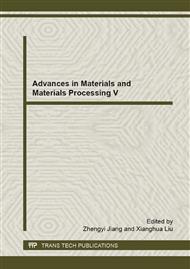p.855
p.859
p.865
p.869
p.874
p.879
p.883
p.888
p.894
The FEM Analysis for Feed Rate of Plate Multi-Point Composite Incremental Forming
Abstract:
Combined with the advantages of multi-point composite incremental forming(MPCIF) of uniform deformation, high formability and efficiency, and can efficient restrain plate’s instability, basing on 3D finite element analysis model of MPCIF, different feed rates were used to form the typical truncated pyramid-shaped work-pieces, the process of MPCIF was simulated and analyzed, and the equivalent plastic strain, forming precision and thickness reduction ratio of deformed parts were studied. The simulation results show that the maximum thickness reduction occur at the diagonal of the parts; plate’s thickness thinning can be more serious with the feed rate is bigger, and plate becomes more easy to crack; more uniform wall thickness and better shape accuracy can be obtain with the feed rate is smaller, but the forming efficiency is lower due to longer forming time.
Info:
Periodical:
Pages:
874-878
Citation:
Online since:
March 2015
Authors:
Price:
Сopyright:
© 2015 Trans Tech Publications Ltd. All Rights Reserved
Share:
Citation:


